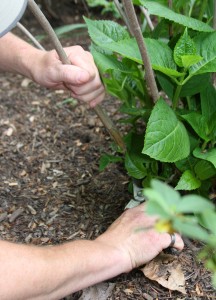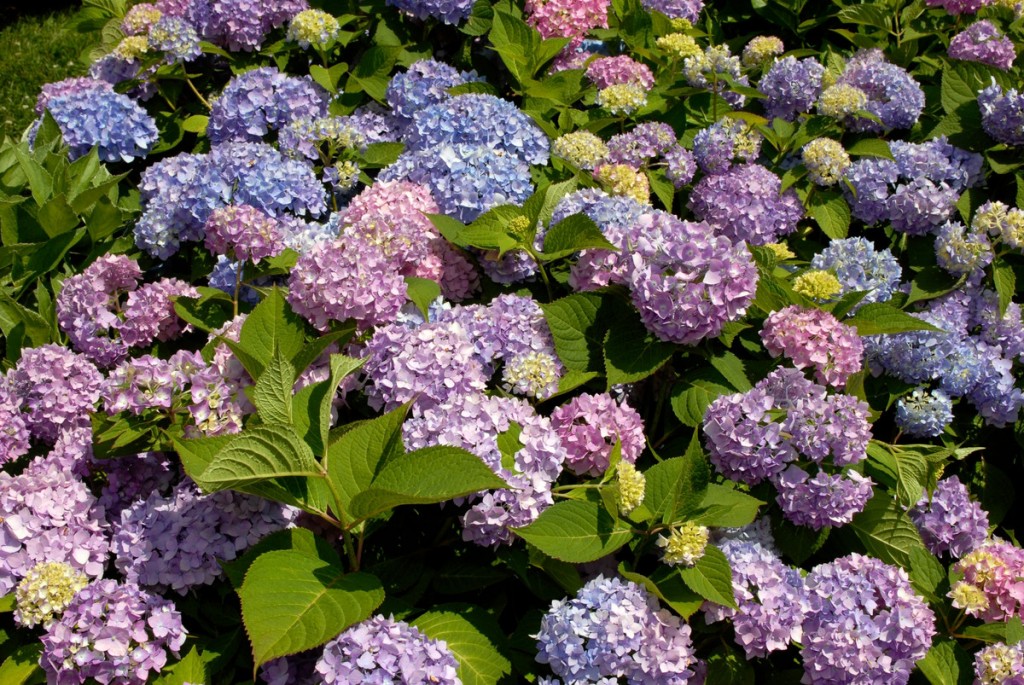Waiting for Hydrangeas
Posted in Horticulture on May 30 2014, by Todd Forrest
Todd Forrest is the NYBG’s Arthur Ross Vice President for Horticulture and Living Collections. He leads all horticulture programs and activities across the Garden’s 250-acre National Historic Landmark landscape, including 50 gardens and plant collections outside and under glass, the old-growth Thain Family Forest, and living exhibitions in the Enid A. Haupt Conservatory.

On April 16 at 6 a.m., the Garden’s weather station reported a low temperature of 30.2°F. The freezing temperatures were accompanied by about a half inch of icy slush that coated the greening turf and accumulated in the chalices formed by the opening flowers of saucer magnolias, which had just emerged after a string of warm April days that, I hoped, signaled the end of our seemingly interminable winter. Needless to say, the Garden’s venerable saucer magnolias did not have their best spring.
For many, memories of that hard April frost will be erased by this week’s temperatures—approaching 90°F as I write—and the reappearance of seersucker suits in midtown. Those of us who love plants will be reminded of April 16 every time we see an old-fashioned Hydrangea macrophylla over the next few months. With the exception of remontant (re-blooming) varieties such as Endless Summer® (more on these later), Hydrangea macrophylla flower from buds formed during the previous growing season. Dormant through the long winter, these buds began to swell as temperatures finally rose in early April, only to be zapped by the hard mid-April frost.
We typically get some frost damage to Hydrangea macrophylla every spring. This year, the damage was as extensive as I have seen it in more than fifteen years of obsessing about the Garden’s plants. Hoping there might be some glimmer of life left deep in the buds and not wanting to envision a year without a profusion of hydrangea flowers in June, we delayed cutting back the dead stems as long as we could. The vigorous growth of new shoots from basal buds over the past week has convinced us that we must let go and cut back to live wood. If you have been waiting and hoping that the once-blooming hydrangeas in your garden will miraculously re-animate, it is time to do the same.

Like most stories that unfold in a gardener’s year, the news is not all bad. A few specimens of the cultivar ‘Lady in Red’ planted in the Perennial Garden seem to have escaped unscathed. Endless Summer® and its remontant kin suffered just as much dieback as the once-blooming varieties, but since these plants flower on new wood as well as old, they are already showing viable buds. Even the once-blooming varieties may produce a few flowers from live buds at the base of the stems. Of course, Hydrangea paniculata and Hydrangea arborescens cultivars flower on new wood, so these plants will pay the rent this summer. The display won’t be as dramatic as we would like, but at least there will be hydrangeas!


You have confirmed what I guessed to be true about the fifteen hydrangea bushes growing in the garden near my apartment building. It is actually quite amazing that most plants fared as well as they did given the long winter. Thanks for writing this.